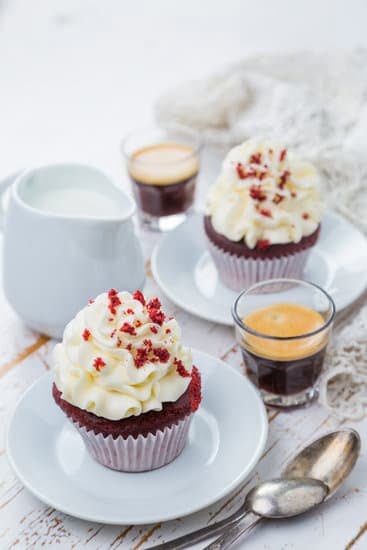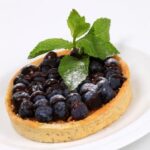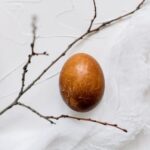The art of cake decorating has evolved over the years, with bakers and decorators constantly seeking new ways to make their creations stand out. One such trend that has taken the cake decorating world by storm is the use of natural flowers as a stunning and elegant addition to cake designs.
Incorporating real flowers into cake decorating not only adds a touch of beauty and sophistication, but also serves as a nod to the natural world. In this article, we will explore the growing popularity of cake decorating with natural flowers, as well as delve into the various techniques, tips, and considerations for achieving stunning floral cake designs.
There is an undeniable charm in adorning cakes with natural flowers that brings a sense of timeless beauty to any occasion. From delicate rose petals to vibrant marigolds, each flower offers its own unique touch to a cake design.
The use of natural flowers allows decorators to celebrate the inherent beauty found in nature’s creations – adding an organic touch that no artificial decoration can replicate. Whether it is for weddings, birthdays, or any special celebration, incorporating natural flowers into cake decorating elevates both the visual appeal and overall sensory experience.
Choosing the perfect natural flowers for cake decorating requires careful consideration. Ensuring that the flowers are safe for consumption and non-toxic is paramount when selecting varieties to adorn cakes. Additionally, color harmony with the rest of the cake design plays a crucial role in creating visually pleasing aesthetics.
Fragrance can also add another dimension to an already delightful experience. By carefully choosing complementary flower varieties based on color palettes, scent preferences, and overall themes, decorators can create cakes that truly capture the essence of nature’s beauty.
In this article, we will delve deeper into selecting edible flower varieties ideal for cake decoration while considering their flavors and culinary applications. We will also explore techniques such as proper cleaning and handling procedures to ensure food safety when working with natural flowers.
With expert tips from professional cake decorators and innovative approaches to pairing flowers with different cake flavors and designs, readers will be inspired to embrace the natural beauty of cake decorating with flowers and embark on their own creative culinary journey. Let us now dive into the art of cake decorating with natural flowers and uncover a world where the beauty of nature intertwines with the sweetness of confectionery.
The Art of Choosing the Perfect Natural Flowers for Cake Decorating
Choosing the perfect natural flowers for cake decorating is an art that requires careful consideration and attention to detail. When selecting flowers for this purpose, it is important to choose ones that are safe for consumption and non-toxic. Not all flowers are edible, so it is crucial to do research or consult with a florist who specializes in edible flowers before making a decision.
In addition to safety concerns, color, scent, and the overall theme of the cake should also be taken into account when choosing natural flowers for cake decorating. The colors of the flowers should complement the color scheme of the cake and enhance its visual appeal.
The scent of the flowers can also add an aromatic element to the cake, but it is important to ensure that the scent does not overpower or clash with the flavor of the cake. Lastly, the overall theme or style of the cake should guide the choice of flowers to create a cohesive and harmonious design.
Once the perfect natural flowers have been selected, it is essential to properly prepare and clean them before using them on cakes. Flowers may have dirt, bugs, or pesticides on them, so they need to be gently cleaned using techniques that preserve their delicate beauty.
It is crucial to handle flowers with care to avoid any damage or bruising that could affect their appearance on the cake. Furthermore, proper sanitation measures should be followed to guarantee food safety when incorporating natural flowers into cake decorating.
By carefully curating a selection of safe and visually appealing natural flowers, decorators can elevate their cakes with charm and elegance while celebrating the beauty of nature. The artistry involved in choosing these blooms ensures that each flower complements both the taste and visual aesthetic of the finished creation.
Preparing and Cleaning Natural Flowers for Cake Decorating
When it comes to incorporating natural flowers into cake decorating, proper preparation and cleaning techniques are crucial to ensure the safety and beauty of your creations. This section will provide you with guidelines on how to gently clean your flowers, removing dirt, bugs, and pesticides while maintaining their integrity. Additionally, we will highlight the importance of proper handling and sanitation to guarantee food safety.
Before using flowers for cake decorating, it is essential to make sure they are safe for consumption and non-toxic. Certain flowers may contain chemicals or toxins that could be harmful if ingested. To ensure the flowers you choose are edible, it is advisable to consult reliable resources such as reputable gardening websites or books dedicated to edible flowers. Create a list of edible flower varieties that are both safe to consume and visually appealing.
Once you have selected your flowers, it is important to clean them thoroughly before using them in cake decoration. Begin by gently removing any dirt or debris from the petals and stems. Be cautious not to damage the delicate structure of the flower during this process.
Next, check for any bugs that may have taken refuge among the petals or inside the blooms. Gently shake or tap each flower upside down over a white surface like a paper towel or plate to dislodge any hidden insects.
To eliminate any traces of pesticides or chemicals that may have been used on the flowers, it is recommended to soak them in cold water for a few minutes. Swirl them around gently in the water to remove any residue, then rinse under cool running water. Pat dry with a clean kitchen towel or paper towels.
Proper handling and sanitation are necessary when working with natural flowers for cake decoration. Remember that these flowers will come into direct contact with food, so maintaining high standards of cleanliness is essential. Wash your hands thoroughly before handling the flowers and ensure that all utensils and surfaces you use during the decorating process are cleaned and sanitized. By following these steps, you can create beautiful and safe cakes adorned with natural flowers.
Cake Decorating Techniques with Natural Flowers
Cake decorating with natural flowers is a wonderful way to add a touch of beauty and elegance to any cake design. There are several techniques that can be used to incorporate these delicate blooms into your creations.
One popular technique is pressing flowers, which not only preserves their beauty but also enhances their use on cakes. To press flowers, simply place them between two sheets of parchment paper and weigh them down with heavy books or other objects. Leave them pressed for several days until they are completely dried out and flat. Once pressed, these flowers can be used as decorative elements on the cake or even embedded within the frosting for a unique look.
Another way to adorn your cakes with natural flowers is by arranging them as cake toppers, cascading floral arrangements, or botanical patterns. This technique allows you to create stunning displays that truly showcase the beauty of nature.
To achieve this, choose a variety of flowers that complement each other in terms of color and shape. Use floral tape or wire to secure the stems together and then place the arrangement on top of the cake or cascade it down the sides.
In addition to pressing and arranging flowers, you can also consider using individual blooms as accents throughout the cake design. Simply place fresh or dried flowers strategically around the cake for an added touch of elegance. Be sure to clean the stems thoroughly and remove any thorns or leaves before inserting them into the cake.
Overall, there are numerous ways to incorporate natural flowers into your cake decorating endeavors. Whether you choose to press them, arrange them as elaborate decorations, or use individual blooms as accents, these techniques will help you create beautiful and visually appealing cakes that celebrate the beauty of nature.
Here are some tips for incorporating natural flowers into your cake decorating
- Select flowers that are safe for consumption and non-toxic.
- Consider the color, scent, and overall theme of your cake when choosing flowers.
- Gently clean the flowers to remove dirt, bugs, and pesticides, ensuring they are safe to be used on the cake.
- Properly handle and sanitize the flowers to ensure food safety.
- Press flowers to preserve their beauty and enhance their use on cakes.
- Arrange flowers as cake toppers, cascading floral arrangements, or botanical patterns.
- Pair the natural flowers with appropriate cake flavors and designs for a harmonious and visually appealing result.
By following these tips and techniques, you can create stunning cake designs that celebrate the beauty of nature through the incorporation of natural flowers. Let your creativity flow and experiment with different flower varieties, arranging techniques, and complementary flavors to bring your cake decorating to new heights.
Pairing Natural Flowers with Appropriate Cake Flavors and Designs
When it comes to cake decorating with natural flowers, one of the key considerations is selecting the right flowers that not only enhance visual aesthetics but also complement the flavors of the cake. By thoughtfully pairing natural flowers with appropriate cake flavors and designs, you can create harmonious and visually appealing cake creations.
Firstly, it is important to consider the flavor profile of both the flowers and the cake. Certain flowers have distinct flavors that can either enhance or clash with certain cake flavors. For example, lavender pairs well with lemon or vanilla cakes, as its floral notes add a delicate and aromatic touch. On the other hand, roses go well with chocolate or berry-flavored cakes due to their sweet and romantic scent.
Additionally, consider matching flower colors with the overall design theme of the cake. The color palette of the flowers should complement or contrast with the colors used in frosting or decorations on the cake. For instance, if you are decorating a pastel-themed cake, using soft-colored flowers like pansies or primroses would be a suitable choice.
| Flower | Suggested Cake Pairing |
|---|---|
| Lavender | Lemon Cake |
| Rose | Chocolate Cake |
| Pansies | Vanilla Cake |
| Marigold | Carrot Cake |
| Violet | Blueberry Cake |
Remember, creativity and experimentation are key when pairing natural flowers with cake flavors and designs. Don’t be afraid to try different combinations, as long as the flavors and aesthetics align harmoniously. With a bit of practice and careful consideration, you can create beautiful and delicious cake creations that celebrate the beauty of nature through the incorporation of natural flowers.
Edible Flower Varieties Ideal for Cake Decoration
Cake decoration is an art that allows bakers and pastry chefs to showcase their creativity while adding a touch of beauty to their creations. One popular trend in cake decorating is the use of natural flowers as decorative elements.
Edible flower varieties are particularly ideal for cake decoration as they not only enhance the visual appeal but also offer captivating flavors. In this section, we will explore some edible flower varieties that are safe to consume and perfect for cake decoration.
Rose Petals
Rose petals are a classic choice when it comes to decorating cakes with natural flowers. Not only do they add a romantic and elegant touch, but they also offer a delicate floral flavor that complements many cake flavors. Choose roses that are organically grown and free from pesticides or other chemicals. Gently rinse the petals before usage to remove any impurities or dirt.
Lavender
Lavender is known for its calming aroma and vibrant purple color, making it an excellent choice for cake decoration. Its subtle floral taste pairs well with vanilla or lemon-flavored cakes. Use lavender sprigs sparingly on your cake for an understated yet sophisticated look.
Marigold
Marigold flowers come in shades of yellow and orange, adding a bright pop of color to any cake design. They have a slightly citrusy flavor that complements fruity or tangy cake flavors like lemon or orange. Ensure you choose pesticide-free marigolds and remove the bitter-tasting white base before using them.
Pansies
Pansies are beautiful flowers with vibrant colors ranging from purple and yellow to blue and white. With their mild, fresh flavor reminiscent of wintergreen, they pair well with vanilla or chocolate cakes. Pansies can be used whole or their petals can be separated and scattered on top of the frosting.
When using edible flowers for cake decoration, it is essential to ensure that they are grown organically and free from any pesticides or chemicals. Additionally, always cross-reference the flower variety with a reliable source to confirm its safety for consumption. With these gorgeous and flavorful edible flower options, you can elevate your cake designs and create visually appealing and delicious masterpieces.
Avoiding Common Mistakes in Cake Decorating with Natural Flowers
Tips for Preventing Flowers from Wilting or Discoloring on Cakes
One common mistake in cake decorating with natural flowers is not properly preserving their freshness, which can result in wilted or discolored flowers that take away from the overall aesthetic. To avoid this, it is crucial to handle and store the flowers correctly.
Firstly, make sure to select flowers that are in peak condition and have not started wilting already. When choosing flowers, look for ones that are vibrant in color and have firm petals. Avoid any with browning edges or signs of wilting.
Once you have chosen the perfect flowers, it is important to keep them fresh until it’s time to decorate the cake. Store them in a cool place away from direct sunlight and make sure they are not exposed to extreme temperatures. Refrigeration can help prolong their freshness, but be cautious as some fragile blooms may be damaged by the cold.
Strategies to Ensure Proper Attachment and Placement of Flowers without Compromising Taste or Texture
Another common mistake when using natural flowers for cake decorating is not attaching them securely enough or placing them improperly, which can affect both the appearance and taste of the cake.
To prevent flowers from toppling over or becoming detached from the cake, it is essential to use appropriate techniques for attachment. One method is to use floral wire or food-safe picks to secure the stems to the cake. This ensures stability while also keeping any parts of the flower that may come into contact with the cake separated using a barrier such as parchment paper or plastic wrap.
When placing the flowers on your cake, be mindful of their positioning and ensure they harmonize with the overall design. Avoid clustering too many flowers in one area as it may create an overcrowded look. Instead, consider spreading them out evenly or arranging them in a cascading fashion for an elegant effect.
It’s important to note that not all flowers are suitable for direct contact with food. If you want to place flowers directly on the cake without a barrier, make sure they are edible, non-toxic, and have been grown without the use of pesticides or herbicides. Always double-check before using any flower that it is safe for consumption.
Enhancing Your Cake Designs with Careful Flower Placement
Avoiding common mistakes in cake decorating with natural flowers can elevate the overall presentation and enjoyment of your creations. By taking measures to prevent wilting or discoloration and ensuring proper attachment and placement, you can achieve stunning results without compromising taste or texture.
Remember to choose fresh and vibrant flowers that are safe for consumption, handle them with care, and store them in a cool environment. Attach them securely using floral wire or picks if needed, and arrange them thoughtfully on your cake to create a visually pleasing design.
Through attention to detail and careful consideration, you can enjoy the beauty and enchantment that natural flowers bring to your cake decorating endeavors while ensuring a delightful experience for both the eyes and taste buds of those who indulge in your creations.
Expert Tips and Tricks for Cake Decorating Natural Flowers
Cake decorators can take their creations to the next level by incorporating natural flowers into their designs. The charm and elegance that natural flowers bring to cakes adds a touch of beauty and sophistication. In this section, we will explore expert tips and tricks for cake decorating with natural flowers, as shared by professional cake decorators.
One useful tip from the experts is to choose flowers that are in season for your cake decorations. Not only will this ensure that you have access to fresh blooms, but it also allows you to highlight the beauty of nature during different times of the year. Additionally, professional cake decorators recommend using organic or pesticide-free flowers when possible to ensure food safety.
Another expert tip is to properly prepare and clean the natural flowers before using them on cakes. This involves gently cleaning the flowers to remove any dirt, bugs, or pesticides that may be present. It is important to handle and sanitize the flowers properly to avoid any potential contamination.
Professional cake decorators also recommend experimenting with different techniques for cake decorating with natural flowers. Pressing flowers is one popular technique that preserves their beauty while enhancing their use on cakes. Flowers can also be arranged as cake toppers, cascading floral arrangements, or used to create botanical patterns on cakes.
Conclusion
In conclusion, incorporating natural flowers into cake decorating is a wonderful way to celebrate the beauty of nature and elevate cake designs. The growing trend of using these delicate blossoms brings charm and elegance to any occasion.
Throughout this article, we have discussed the art of choosing the perfect flowers, preparing and cleaning them properly, various decorating techniques, pairing flowers with appropriate flavors and designs, edible flower varieties ideal for cakes, avoiding common mistakes, and expert tips and tricks. By embracing the natural beauty of cake decorating with flowers, individuals can create visually stunning and delicious creations that truly captivate.
The benefits of using natural flowers in cake decorating are numerous. Not only do they add a touch of enchantment to any design, but they also offer a unique visual appeal that cannot be replicated by artificial decorations. Selecting blooms that are safe for consumption is crucial, ensuring that they are non-toxic and prepared in a sanitary manner. Additionally, carefully considering color, scent, and theme when choosing flowers allows for cohesiveness in design and enhances overall aesthetics.
As cake decorators embrace the natural beauty of floral elements in their creations, there is an opportunity for endless creativity and experimentation. From pressing flowers to arranging them as toppers or cascading floral arrangements on cakes, there are countless ways to incorporate these beautiful elements into designs.
Pairing natural flowers with appropriate cake flavors creates harmonious combinations that please both the eyes and taste buds. By exploring edible flower varieties that are safe to consume, decorators can enhance not only the visual appeal but also the culinary experience of their cakes.
Frequently Asked Questions
How do you decorate a cake with natural flowers?
Decorating a cake with natural flowers can add a beautiful and organic touch to any occasion. To start, ensure that the flowers you are using are clean and free from any chemicals or pesticides. You can gently wash them if needed. Remove any stems or leaves, as these may not be suitable for consumption.
Prior to placing the flowers on the cake, it’s essential to create a barrier between the flowers and the cake’s surface. This can be achieved by either laying down a piece of parchment paper or plastic wrap directly on top of the cake before arranging the flowers on it. Carefully arrange the flowers in an aesthetically pleasing way, making sure they are secure but do not penetrate deep into the cake. It’s important to note that some flowers may wilt or release petals over time, so it is best to decorate the cake shortly before serving.
What real flowers are safe to put on a cake?
When choosing fresh flowers for decorating a cake, it is crucial to ensure they are safe for consumption as some varieties can be toxic if ingested. Opting for edible flowers is always a safe choice when adorning cakes.
Some commonly used edible flowers include roses, chamomile, lavender, pansies, marigolds, violets, and nasturtiums among others. However, it is essential to verify that the specific variety of flower you plan to use is indeed edible and has been grown without harmful pesticides or chemicals.
Is it safe to decorate a cake with fresh flowers?
It generally is safe to decorate a cake with fresh flowers as long as precautions are taken in ensuring their safety and they are used appropriately. Selecting edible varieties of blooms reduces any potential risks associated with consuming them accidentally while enjoying the cake. Furthermore, thorough cleaning of the flowers beforehand is highly recommended to eliminate any dirt, insects, or residues from potential pesticides that may have come into contact with them during growth.
Additionally, it’s vital to create a protective layer (such as parchment paper) between the blooms and actual cake to prevent any direct contact. This way, the flowers serve primarily as decorative elements rather than being consumed directly. It’s essential to communicate with those enjoying the cake about the presence of fresh flowers so they exercise caution while eating it.

Welcome to our cake decorating blog! My name is Destiny Flores, and I am the proud owner of a cake decorating business named Cake Karma. Our mission is to provide delicious, beautiful cakes for all occasions. We specialize in creating custom cakes that are tailored specifically to each customer’s individual needs and tastes.





